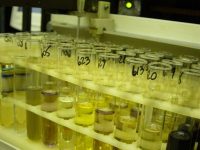Detailed oil analysis is critical to effectively managing reliability and is sometimes complemented with technologies such as vibration analysis, ultrasound and thermography to maximize the equipment’s life.
While the oil can be tested prior to start up if there are obvious issues, it’s usually better to pull a sample when the equipment is operating. And for idled equipment, that first analysis should be conducted as soon as possible.
Before sending the sample to the lab, be sure that the lab is aware the equipment has been idled and for how long. “Often, we receive samples without background information,” Matt said. “Customers don’t always let us know if the equipment has been down for a while.”
For those that have been taking advantage of trending oil analysis, once the lab analyzes the first post shutdown sample, they should be able to determine where to restart trending analysis. If that sample is pretty much where trending left off, they can continue trending without missing a beat. Otherwise the oil may have to be replaced and the trending analysis reset.
“Trending will usually not be a problem as long as they didn’t change the oil,” Matt explained. “But if they changed the oil, we need to know about it. They should try to get back on schedule ASAP and send the sample to us right away.”
During the COVID-19 shutdown, many businesses were not analyzing their turbine oil. Getting back on track with an annual turbine analysis (ATA) is one of the keys to avoiding extensive repairs of this costly equipment. An ATA will provide a clear window into the health of the turbine and the lubricated components.


